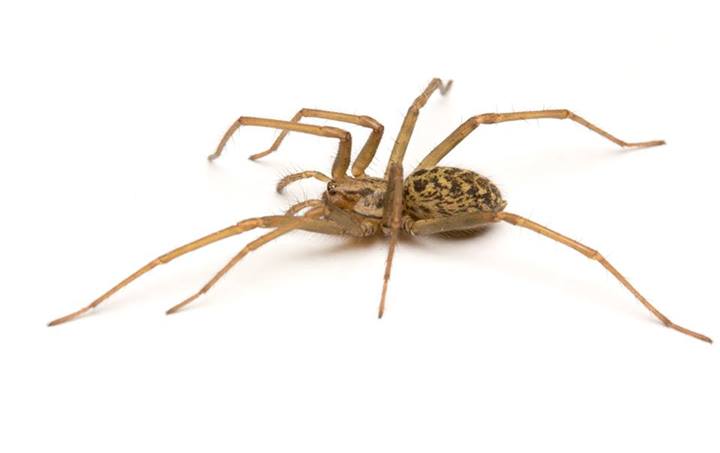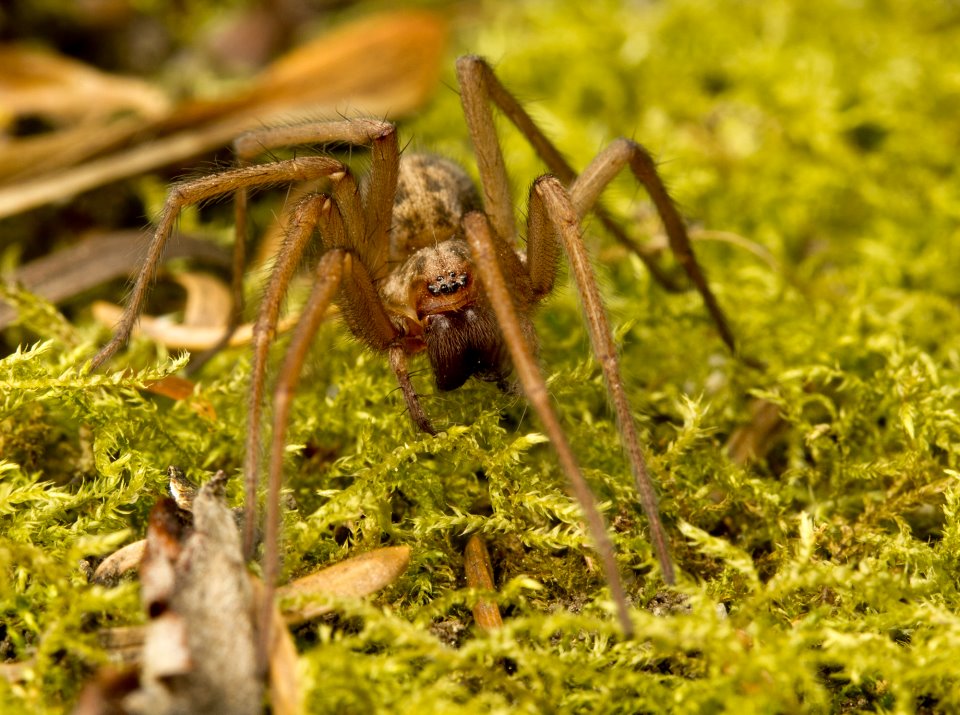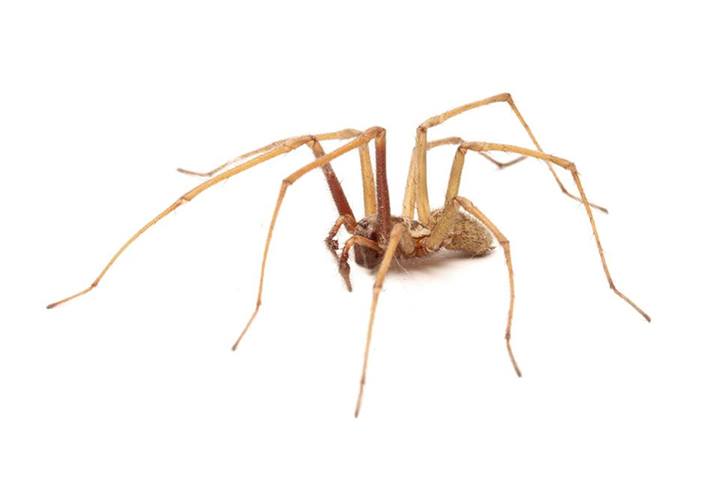(and other West Coast cities)
UPDATE (28 July, 2018): The scientific names used in this post are out of date. The giant house spider is now Eratigena duellica, and the hobo spider is Eratigena agrestis. Tegenaria domestica remains the same!
Living in Vancouver, I frequently hear about a HUGE hairy spider that was trapped in the bath or lurking in the bedroom or scuttling across the kitchen floor. More often than not, it’s described as a wolf spider (family Lycosidae). I’m pretty confident that every single time, the spider being referred to is actually a member of the family Agelenidae, and in particular, the genus Tegenaria. I’m almost as certain that the species in question is Tegenaria duellica, commonly called the giant house spider or European house spider.
Sometimes the slightly better informed giant-spider-spotter will have taken a closer look at the spider, or photographed it, then done some online research and concluded that it’s the ‘dangerous’ hobo spider, Tegenaria agrestis.
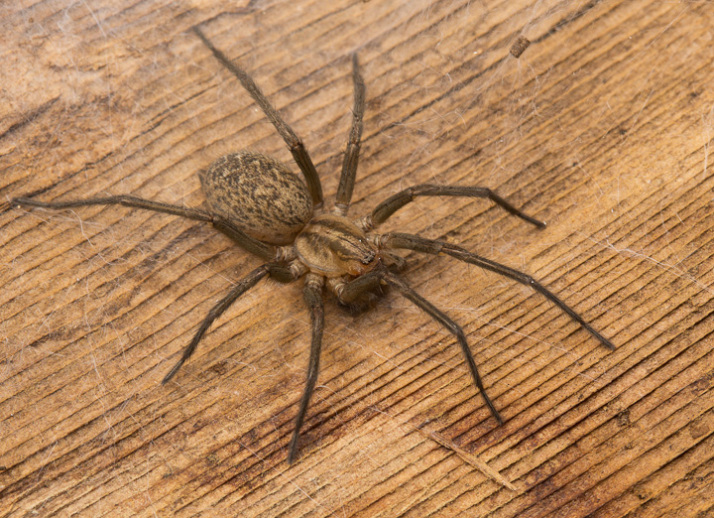
Female hobo spider, Tegenaria agrestis. These spiders may also be found in houses on the west coast of BC, but are generally not as large as T. duellica.
There is a lot of flat-out wrong information on the internet about hobo spiders and their supposed ability to cause necrotic lesions. Some people mistakenly refer to T. agrestis as aggressive house spiders. (1) They aren’t. And, (2) agrestis means ‘of the field’. As for ‘dangerous’, arachnologists Robb Bennett and Rick Vetter
“know of no authentic Canadian report of hobo spider envenomation.”
See their paper on the misdiagnosis of spider bites in Canada for more reasons not to fear hobo spiders. Having done a bit of work with Tegenaria agrestis, both in the field (on Vancouver Island) and in the lab, I can personally confirm that they are far more likely to be running away from humans than attempting to bite them (just like other Tegenaria species).
Both hobo spiders and giant house spiders can be found living alongside humans on the west coast. They are not easy to tell apart, but Rick Vetter and Art Antonelli have prepared an excellent identification guide that will tell you at the very least if it’s NOT a hobo spider (not that there would be any cause for alarm if it was one). In a house in southern BC, that leaves you with T. duellica (larger) or T. domestica (smaller).
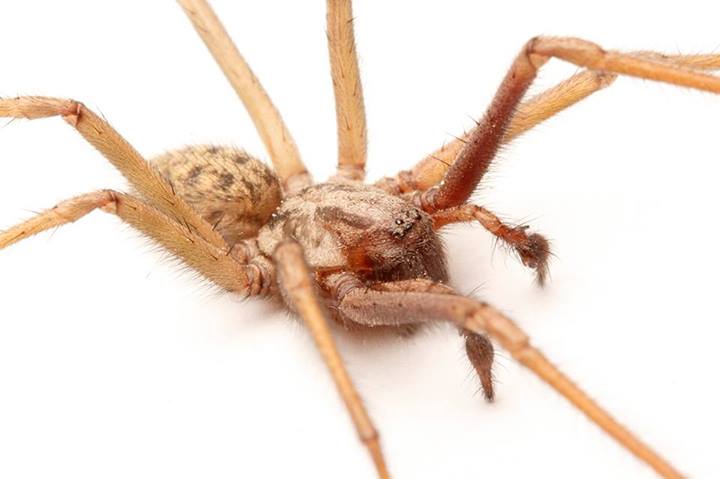
If it has long pointy palps like this guy, it’s NOT a hobo spider, but either T. duellica or T. domestica.
Even without the (fairly recent) hype about the ‘medically significant’ hobo spider, humans seem to generally fear and despise Tegenaria. In The World of Spiders—a delightful book in which the author’s passion for his subjects fairly leaps off every page–W.S. Bristowe admitted that he had no affection for house spiders. In their defence, however, he wrote that,
“A Tegenaria cannot deliver a painful bite. Its unpopularity arises from its leg span, its rapid movements and general creepyness.”
The movement of these spiders is indeed disconcerting. Males are pretty much all leg, and they can run FAST. Bristowe noted that Tegenaria atrica can run a distance equivalent to 330 times her body length in 10 seconds. This means a human-length (let’s say 5’9″, or 1.75 m) Tegenaria could run the 100-metre dash in 1.73 seconds. Pretty speedy.
But apart from their occasionally-startling dashing to-and-fro (mainly in the fall when males go on the prowl, abandoning their webs to search for females), house spiders in general are fabulous to have around. They are great at taking care of all manner of arthropod home-invaders and are really fun to observe.
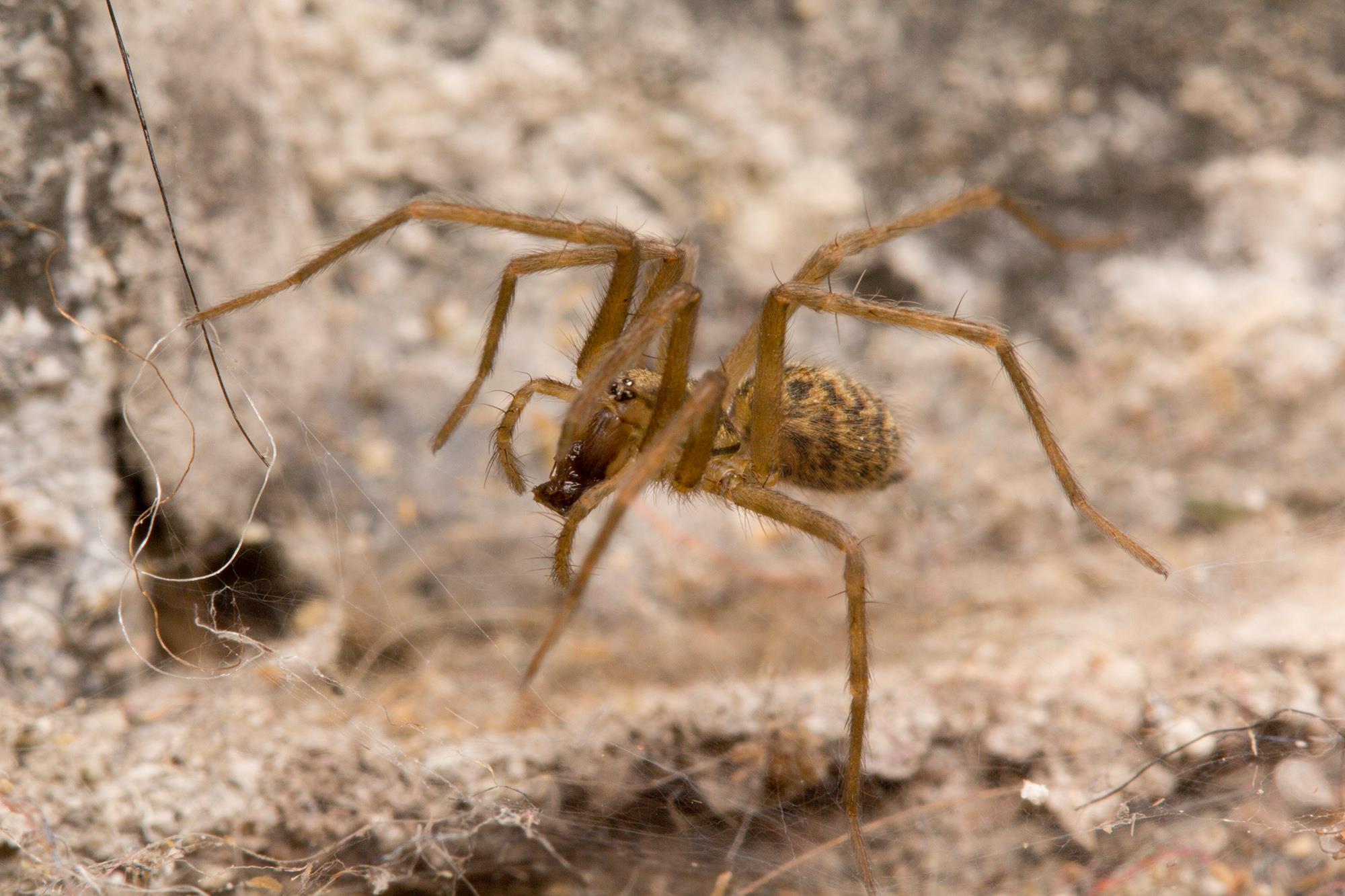
House spiders, like this Tegenaria that set up shop just inside the door of our lab, help out by snacking on any bugs that might also enjoy living inside buildings.
If you really can’t stand having them in your home, relocate them outside, and with luck they’ll find a nearby crevice in which to build the retreat of their funnel-shaped webs. You probably won’t often catch them out on their silk sheets, as they will run and hide in their retreats at the slightest disturbance.
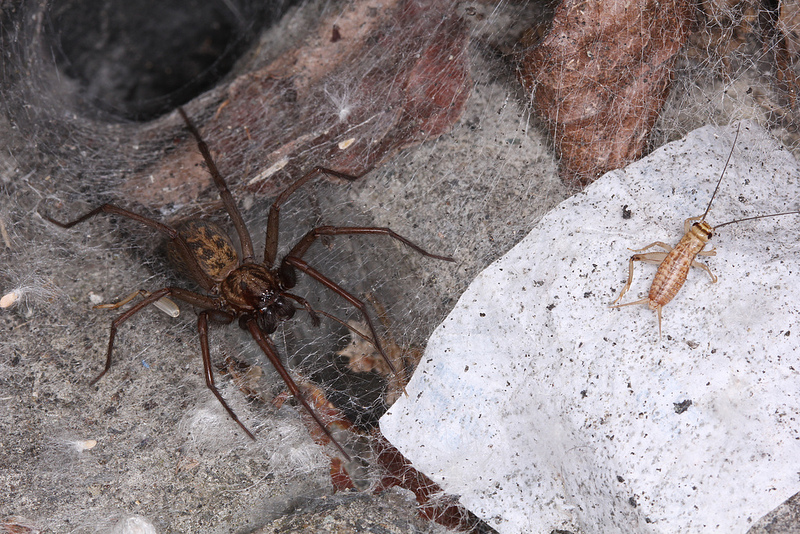
Usually house spiders wait for prey just inside their tube-like silk retreat. We enjoy attempting to entice this Tegenaria (who lives just outside our lab) to come out and say hi by dropping small insects onto her sheet web. The speed with which she can dart out and snag prey is quite stunning!
If you’re still not convinced that house spiders are good neighbours rather than enemies, you could always try Bristowe’s method for curing fear of Tegenaria: eat one**.
*Sean McCann, a house spider enthusiast, provided all the photographs for this post. He’d like it to be noted that in addition to being incredibly fast, house spiders also *sound* creepy (if you’re lying on the floor and one runs past your head).
**It didn’t actually end up curing his fear of house spiders, but he did win a lot of money as a result.

